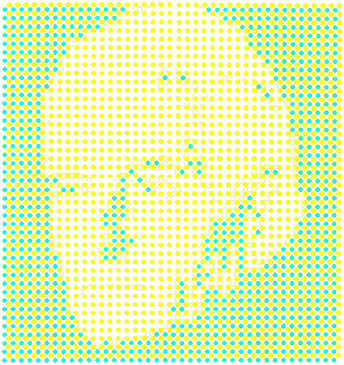Wolfgang Köhler1887–1967
Köhler introduced the concept of field forces operating in both perception and in its underlying neurophysiology. “It is now generally acknowledged that psychological facts have `correlates’ in the biological realm. These correlates, the so-called psycho-physical processes are events in the central nervous system. A given visual field, for instance, is biologically represented by a certain distribution of processes in the occipital lobes.” Moreover, the brain processes were considered to be isomorphic (having the same form) with the percept, so that principles of brain function could be inferred from perceptual phenomena. He went on to develop a speculative neurophysiology based mainly on the principles of perceptual grouping and on his experiments with figural aftereffects. It could be said that these speculations did more to hasten the demise of Gestalt theory than any other factor: neurophysiologists failed to find any evidence for such fields of electrical activity in the brain, and so tended to dismiss Gestalt theory in general rather than Köhler’s unsuccessful attempt at neuroreductionism in particular. The robust visual phenomena at the heart of Gestalt psychology remained an enigma. Köhler was born in Revel, Estonia. He was a student at the Universities of Tübingen and Bonn before obtaining a doctorate in psychology at Berlin, where he met Koffka. He arrived in Frankfurt in 1910, shortly before Wertheimer conducted his experiments on the phi phenomenon there, and participated in them with Koffka. Between 1913 and 1920, while interned on the island of Tenerife, he studied the behaviour of chicks and chimpanzees; he applied Gestalt concepts to problem solving and wrote his influential book on The Mentality of Apes. He argued that animals learn the relations between events rather than between stimuli and responses, and that they applied insight to the solution of problems. Evidence for the latter derived from observations of chimpanzees stacking crates and constructing tools to obtain food otherwise out of reach: “The most striking phenomenon in these tests is still the sudden occurrence of perfectly clear and definite solutions”. Köhler returned to the study of perception following his enforced sojourn on Tenerife, and sought to link it more firmly with physical field processes, like those of soap bubbles and magnetism. His book on physical Gestalten was instrumental in his appointment in 1922 to the chair of psychology in Berlin. He left Berlin for Swarthmore College in 1935, and continued editing Psychologische Forschung from there, as well as conducting many fruitful experiments in perception, particularly on figural aftereffects. Köhler was the youngest member of the Gestalt trio, and he adapted most successfully to life in the United States. He was president of the American Psychological Association in 1959. He can be seen here comprised of the same motif as his erstwhile Gestalt colleagues, but in this case he is defined by fields of open circles.
